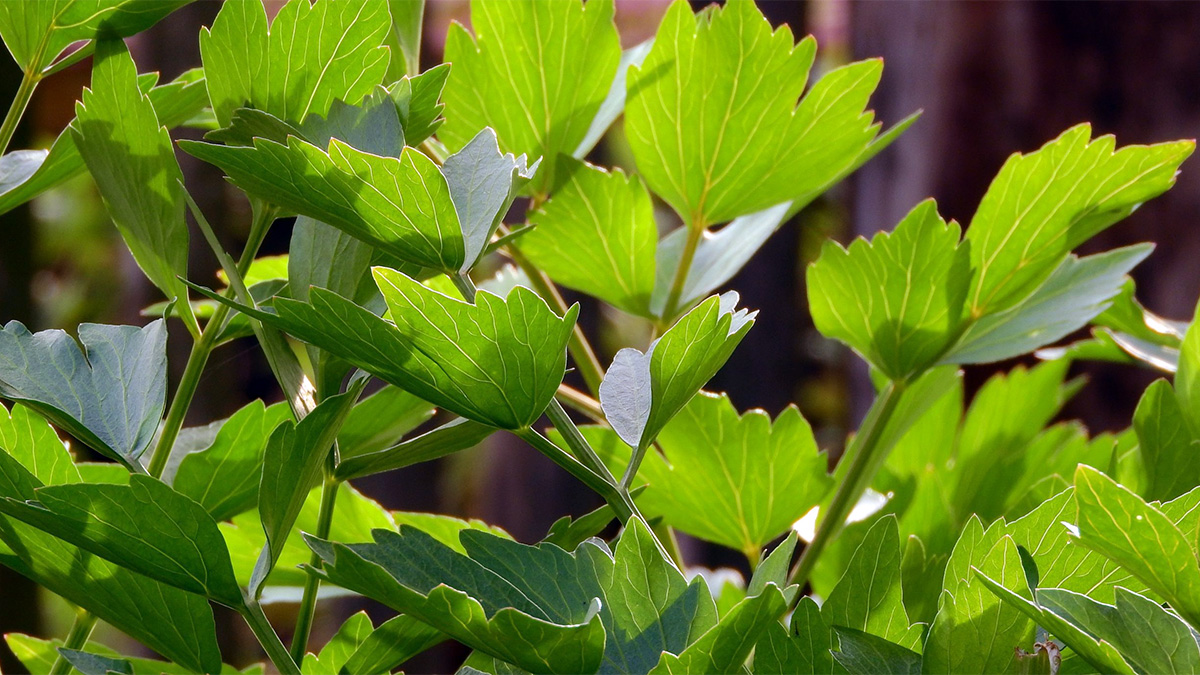Why Lovage is Making a Comeback and How to Grow It Yourself

Lovage is a wonderfully versatile yet often overlooked herb that’s recently regaining popularity among gardeners and food enthusiasts alike. Its resurgence is no surprise, given its delightful flavor, culinary versatility, and numerous garden benefits. Whether you’re new to gardening or an experienced grower, lovage deserves a spot in your garden this year.
What is lovage?
Lovage (Levisticum officinale) is a perennial herb native to the Mediterranean region. Historically cherished for both culinary and medicinal purposes, lovage has long stems, bright green leaves, and umbels of yellow-green flowers. It boasts a distinct celery-like flavor with hints of parsley, making it uniquely suited for a wide array of dishes, from soups to salads and stews.
Traditionally, lovage has been used in European cuisines to flavor stocks and sauces. Medicinally, lovage was valued for its digestive and anti-inflammatory properties, enhancing overall health and wellness. Despite its historical popularity, lovage had largely fallen out of favor—until now.
Why lovage is gaining popularity again
The resurgence of lovage stems from a growing interest in heirloom and traditional plants. Gardeners and chefs alike are rediscovering herbs and vegetables that once adorned gardens centuries ago. These plants, including lovage, offer exciting culinary possibilities and reconnect us with historical gardening traditions.
Lovage’s popularity also coincides with an increased interest in sustainable gardening and biodiversity. This herb attracts beneficial pollinators such as bees and butterflies, contributing to a healthier garden ecosystem. Its resilience and low maintenance requirements align perfectly with modern gardening trends favoring sustainability and minimal resource usage.
Additionally, chefs have begun to reintroduce lovage into contemporary dishes, appreciating its robust flavor that enhances meals naturally without overpowering other ingredients. Its versatility and ease of cultivation have once again made lovage a gardener’s and cook’s favorite.
Benefits of growing lovage
Aside from its delightful taste, lovage offers several impressive benefits. Rich in vitamins C and B complex, as well as minerals like magnesium, calcium, and potassium, lovage is nutritious and supports healthy immune function.
In the garden, lovage enhances biodiversity. Its tall, leafy structure provides habitat and shelter for beneficial insects, encouraging a healthy garden ecosystem. Its dense foliage can also act as natural mulch, helping suppress weeds and retain soil moisture.
Culinary enthusiasts will appreciate lovage for its incredible versatility. Its leaves add flavor to salads, soups, and stews, while the stems and seeds are excellent seasonings for sauces and marinades.
How to grow lovage: step-by-step guide
Choosing the right location
Lovage prefers a sunny to partially shaded location with well-draining, fertile soil. While it thrives best in full sun, it can tolerate partial shade, particularly in hotter climates. Choose an area where lovage has enough room to grow, as mature plants can reach 4-6 feet tall and about 3 feet wide.
Planting lovage from seed or transplants
You can plant lovage from seeds or transplants. To start from seeds, sow indoors 6-8 weeks before your last frost date, lightly covering seeds with soil. Keep them moist until germination, typically within 10-14 days. Transplant seedlings outdoors after the risk of frost passes, spacing plants about 2-3 feet apart.
Alternatively, purchase young lovage plants from a nursery. Transplants can go directly into the garden in spring, ensuring the crown of the plant sits at soil level.
If garden space is limited, lovage grows well in containers. Choose a large container (at least 12-18 inches in diameter) with drainage holes and use quality potting soil. Ensure adequate watering, as containers dry out faster than garden beds. Position your potted lovage in a sunny to partially shaded location, and apply organic fertilizer occasionally to support healthy growth.
Caring for your lovage plants
Lovage plants require consistent moisture, especially during the first growing season. Water deeply once a week, or more frequently during dry spells. Mulching around the base of the plant helps retain moisture and keep weeds at bay.
Lovage generally doesn’t require additional fertilizer if planted in nutrient-rich soil. However, a light application of organic compost or balanced, slow-release fertilizer in early spring can enhance growth.
Regularly inspect your plants for pests such as aphids and caterpillars. Treat infestations organically with insecticidal soaps or by encouraging beneficial insects like ladybugs and lacewings to your garden.
Harvesting and storage
You can begin harvesting lovage leaves as soon as plants are well-established and roughly a foot tall. To harvest, snip leaves or entire stalks from the outer part of the plant, leaving the inner leaves intact for continued growth.
For optimal flavor, harvest lovage in the morning when essential oils are at their highest concentration. To store, wash harvested leaves thoroughly, pat them dry, and wrap in paper towels to refrigerate. You can also dry or freeze lovage to extend its use throughout the year.
Common problems and solutions
While generally resilient, lovage can occasionally face issues such as fungal diseases, aphids, or slow growth due to inadequate nutrients or water.
Fungal issues can be prevented by spacing plants properly and avoiding excessive watering. Aphids can be managed with regular inspection and removal by hand or treated with natural insecticidal soap.
If your lovage plant grows slowly, consider amending the soil with compost or balanced organic fertilizer to enhance soil fertility and encourage vigorous growth.
Delicious ways to use lovage in your kitchen
Lovage’s distinctive flavor makes it an excellent culinary herb. Fresh leaves can brighten salads, sandwiches, and soups. Stir chopped lovage leaves into potato salads or sprinkle them over steamed vegetables for a flavor boost. The stems, resembling celery, can flavor stocks, soups, and stews.
Lovage seeds make an aromatic seasoning similar to celery seed. Grind dried lovage seeds to season marinades, sauces, and bread. Creative cooks also use lovage to craft flavorful herbal teas and infused vinegars, further demonstrating its culinary versatility.
Conclusion
Lovage is experiencing a much-deserved comeback due to its delicious flavor, culinary versatility, and garden friendly nature. Easy to grow and maintain, this herb makes an excellent addition to any garden, large or small. By following these straightforward planting, care, and harvesting instructions, you can soon enjoy the abundant benefits of lovage in your own home.
